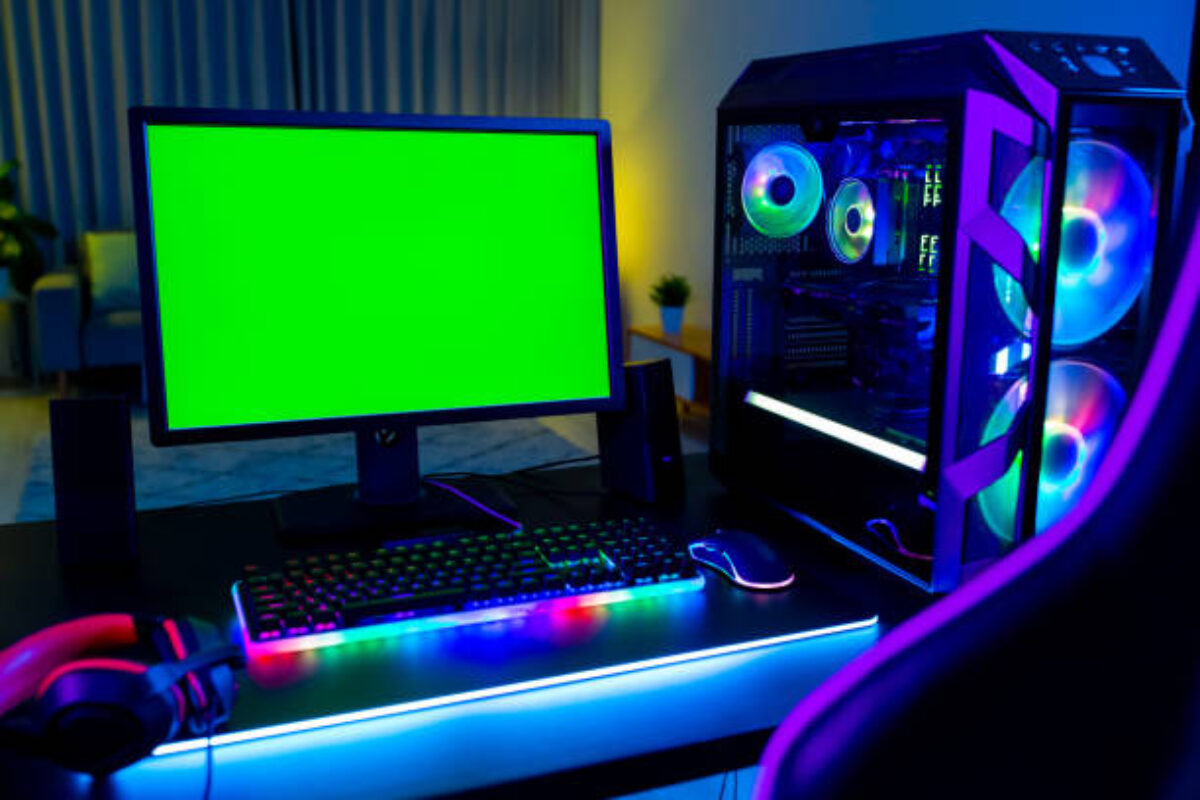Introduction
When it comes to computer hardware, one component that plays a crucial role in delivering stunning visuals is the graphics card. Whether you’re a gamer, a video editor, or a graphic designer, having a powerful graphics card is essential for a smooth and immersive experience.
However, not all graphics cards are created equal. While there are remarkable options available on the market, there are also some that leave much to be desired. In this article, we will explore the world of graphics cards and uncover the contenders for the title of the worst graphics card.
Before we dive into the specific cards, it’s important to understand the factors that determine the performance and overall quality of a graphics card. From the GPU (graphics processing unit) to the memory size and clock speed, several elements contribute to the card’s capabilities.
Additionally, factors such as compatibility, power consumption, and driver support can impact the user’s experience. By considering these aspects, we can evaluate the graphics cards objectively and determine which ones fall short.
Without further ado, let’s take a closer look at some of the worst graphics cards available today. While these cards may serve a purpose for certain individuals with specific needs, they generally disappoint in terms of performance, value, or both. So, buckle up as we embark on this journey to uncover the cards that you should definitely avoid.
Understanding Graphics Cards
Before delving into the worst graphics cards, it is essential to have a basic understanding of what a graphics card is and how it functions. A graphics card, also known as a GPU (graphics processing unit), is a dedicated piece of hardware designed to handle the processing and rendering of visual data. It works in conjunction with the computer’s CPU (central processing unit) to deliver high-quality graphics.
The primary purpose of a graphics card is to interpret and execute complex instructions related to graphics rendering. It takes information from the CPU and transforms it into images and animations that can be displayed on a monitor. The GPU consists of hundreds or even thousands of smaller processing units called cores, which work together to perform these calculations at a rapid pace.
Graphics cards also have their own dedicated memory, known as VRAM (video random access memory). VRAM stores data that relates to the visuals, textures, and other elements of a game or application to ensure smooth and fluid performance. The amount of VRAM plays a significant role in determining the card’s ability to handle high-resolution graphics and memory-intensive tasks.
Other important factors to consider when evaluating a graphics card include clock speed, which determines how fast the GPU can process data, and the memory bandwidth, which affects the speed at which data can be transferred between the GPU and VRAM.
Furthermore, the architecture of a graphics card can greatly impact its performance. Modern GPUs are often built using advanced technologies, such as NVIDIA’s Turing or AMD’s RDNA architectures. These architectures incorporate specialized features and optimizations to enhance performance and efficiency in specific tasks, such as gaming or content creation.
With the growing demand for realistic graphics and immersive virtual experiences, graphics cards have undergone significant advancements over the years. From entry-level options to high-end flagship models, there is a wide range of graphics cards available to cater to different needs and budgets.
Now that we have a better understanding of how graphics cards work, let’s explore some of the worst graphics cards out there. These cards may fall short in terms of performance, features, or value, making them less than ideal choices for most users.
Factors to Consider
When it comes to selecting a graphics card, there are several factors that you should take into consideration to ensure you make an informed decision. These factors will not only impact the card’s performance but also its compatibility with your system and your specific requirements. Let’s take a look at some of the key factors to consider before purchasing a graphics card.
- Performance: The performance of a graphics card is determined by factors such as the GPU clock speed, the number of cores, and the memory size. It’s important to assess whether the card will meet your performance needs for gaming, video editing, or other graphic-intensive tasks.
- Compatibility: Ensure that the graphics card is compatible with your computer’s hardware and operating system. Check the system requirements and verify whether your power supply has the necessary connectors to support the card.
- Budget: Set a budget range for your graphics card purchase. Consider the performance-to-price ratio and decide how much you are willing to spend to get the desired level of performance.
- Memory: The amount of VRAM on a graphics card is crucial for handling complex textures and high-resolution graphics. Determine if the card has sufficient memory to meet your specific needs.
- Power Consumption: Graphics cards can consume a significant amount of power, so it’s important to ensure that your power supply can handle the card’s requirements. Consider the power efficiency of the card and its impact on your energy bill.
- Connectivity and Ports: Check the available ports on the graphics card to ensure compatibility with your monitor and other devices. Also, consider the need for features like HDMI, DisplayPort, or VR support.
- Cooling and Noise: Evaluate the cooling solution on the graphics card to prevent overheating and ensure optimal performance. Consider factors like fan design, heatsink size, and noise levels generated by the card.
- Manufacturer and Support: Research the reputation and track record of the graphics card manufacturer. Consider factors like driver support, warranty, and customer service.
By taking these factors into account, you can make a more informed decision when selecting a graphics card that meets your needs and aligns with your budget. Now that we have a clear understanding of the factors to consider, let’s dive into the world of the worst graphics cards and uncover their shortcomings.
The “Honorable” Mention: Intel HD Graphics
When it comes to integrated graphics solutions, Intel HD Graphics is often considered the go-to option for basic computing needs. However, when compared to dedicated graphics cards, Intel HD Graphics falls short in terms of performance and rendering capabilities.
Intel HD Graphics is commonly found in budget laptops and desktop computers, offering a cost-effective solution for everyday tasks like web browsing, word processing, and media playback. It can handle light gaming and video streaming, but it struggles when it comes to handling graphically demanding applications or AAA games.
The main drawback of Intel HD Graphics is its limited power. Since it relies on the CPU for processing power, it tends to lag behind dedicated graphics cards in terms of performance. This limitation becomes particularly noticeable when running graphic-intensive tasks or playing high-resolution games, resulting in lower frame rates and reduced visual quality.
Furthermore, Intel HD Graphics typically lacks the necessary VRAM to handle demanding graphics. With shared system memory, it has a limited pool of resources, which can lead to performance bottlenecks and stuttering in games or applications that require a larger memory buffer.
While Intel has made improvements with each new generation of processors, Intel HD Graphics is still not suitable for serious gaming or professional graphics work. Gamers and content creators will find the lack of dedicated GPU power and limited performance options to be a significant drawback.
However, it is worth noting that Intel HD Graphics serves its purpose as an entry-level integrated solution, allowing users to perform basic tasks without the need for a separate graphics card. For casual users who primarily engage in web browsing, streaming, and light gaming, Intel HD Graphics can provide a satisfactory experience.
Overall, while Intel HD Graphics may not be the worst graphics card on the market, it falls short when compared to dedicated graphics cards in terms of performance and capabilities. Serious gamers and professionals should consider investing in a dedicated graphics card to achieve the optimal gaming and graphics experience.
The Budget Nightmare: NVIDIA GeForce GT 710
When it comes to budget-friendly graphics cards, the NVIDIA GeForce GT 710 is often touted as an affordable option for entry-level gaming or multimedia tasks. However, this card falls short in terms of performance and value compared to other options on the market.
The NVIDIA GeForce GT 710 is equipped with 2GB of DDR3 memory and is capable of handling light gaming and basic multimedia tasks. It can provide a slight improvement over integrated graphics solutions, but it struggles to deliver smooth performance in graphically demanding games or applications.
One of the main drawbacks of the GT 710 is its outdated architecture, which limits its performance capabilities. It utilizes the Kepler architecture, which was first introduced in 2012, making it significantly outdated compared to the current generation of graphics cards.
Furthermore, the GT 710 has a relatively weak GPU, consisting of only 192 CUDA cores. This limited number of cores hampers its ability to handle more demanding games or applications, resulting in low frame rates, reduced graphical details, and poor overall performance.
In terms of power consumption, the GT 710 is relatively energy-efficient, which can be seen as a positive aspect for budget-conscious users. However, this energy efficiency comes at the cost of performance, making it less suitable for gaming or other graphics-intensive tasks.
One area where the GT 710 may find some use is in entry-level systems that require multiple display support or basic video playback. With support for dual monitors and a range of connectivity options, it can be a viable choice for users in need of a simple and affordable solution for multi-monitor setups.
However, for those looking for a graphics card that can handle modern gaming titles or demanding applications, the GT 710 falls short. Its limited performance and outdated architecture make it ill-suited for delivering smooth and immersive experiences.
Overall, while the NVIDIA GeForce GT 710 may seem appealing due to its affordability, it is important to consider its limitations. Serious gamers and users with demanding graphics needs should consider other options that offer better performance and value for their money.
The Struggling Performer: AMD Radeon R5 220
When it comes to graphics cards in the entry-level segment, the AMD Radeon R5 220 is often seen as an affordable option for casual gaming and multimedia tasks. However, this card falls short in terms of performance and features compared to more capable alternatives.
The AMD Radeon R5 220 is equipped with 2GB of DDR3 memory and is designed for budget-conscious users who want to upgrade from integrated graphics solutions. While it may provide a marginal improvement over integrated graphics, it struggles to deliver smooth performance in modern games or graphics-intensive applications.
One of the main limitations of the R5 220 is its outdated architecture. Built on the TeraScale 2 architecture, which was introduced back in 2011, it fails to keep up with the demands of modern gaming. The lack of architectural advancements results in reduced performance and limited compatibility with newer technologies.
In terms of performance, the R5 220 falls short, especially when compared to more recent entry-level graphics cards. With a low number of stream processors (also known as shaders) and a relatively low clock speed, it can struggle to handle graphically demanding tasks, resulting in low frame rates and reduced visual quality.
Additionally, the R5 220 is limited in terms of memory bandwidth, which can further hamper its performance. The low memory bandwidth can lead to slower data transfer between the GPU and the VRAM, resulting in longer loading times and decreased overall performance.
While the R5 220 may have some appeal for users on a tight budget who are seeking a graphics card for light gaming or multimedia tasks, its limitations become apparent in more demanding scenarios. Gamers looking to play modern titles or users engaging in graphics-intensive tasks, such as video editing or 3D rendering, will find the R5 220 struggling to keep up.
Moreover, the lack of support for technologies like DirectX 12 and Vulkan further restricts its capabilities. This means that users may miss out on the performance optimizations and graphical advancements offered by these newer technologies.
Overall, while the AMD Radeon R5 220 may seem like an attractive option due to its affordability, it falls short in terms of performance and features. Users seeking a more capable entry-level graphics card should explore alternative options available on the market to ensure a smoother and more enjoyable graphical experience.
The Mid-range Disappointment: NVIDIA GeForce GTX 1650
The NVIDIA GeForce GTX 1650 is marketed as a mid-range graphics card that offers a balance between cost and performance. However, compared to other options in its price range, the GTX 1650 falls short in terms of performance and value.
The NVIDIA GeForce GTX 1650 features 4GB of GDDR5 memory, making it suitable for 1080p gaming and multimedia tasks. While it can handle popular titles at medium settings, it struggles to deliver smooth performance in more demanding games or graphics-intensive applications.
One of the main drawbacks of the GTX 1650 is its outdated architecture. It utilizes the Turing architecture, which was introduced in 2018, but lacks some of the advanced features found in higher-end NVIDIA GPUs. This limits its performance and ability to take advantage of newer technologies.
In terms of raw power, the GTX 1650 is underwhelming compared to other mid-range graphics cards. It has a relatively low number of CUDA cores and lower clock speeds, resulting in reduced performance in graphically demanding scenarios. This can lead to lower frame rates, decreased visual quality, and difficulties in achieving smooth gameplay.
Additionally, the GTX 1650’s memory configuration can be a limiting factor. While the 4GB of GDDR5 memory is suitable for most games at 1080p resolution, it may struggle with more memory-intensive tasks or higher resolution gaming. This can lead to performance bottlenecks and hinder the card’s ability to handle demanding textures and visual effects.
Another consideration is the power consumption of the GTX 1650. While it is relatively energy-efficient compared to higher-end graphics cards, it still requires a dedicated power connector. This adds to the overall power requirements of the system and may limit its compatibility with low-wattage power supplies.
Overall, while the NVIDIA GeForce GTX 1650 may be marketed as a mid-range graphics card, it falls short in terms of performance and value compared to alternative options in its price range. Serious gamers and power users may find that other mid-range graphics cards offer better performance and more advanced features for a similar price point.
However, the GTX 1650 can still be a viable choice for users on a budget who prioritize power efficiency and moderate gaming or multimedia tasks. It can provide a decent gaming experience for casual gamers or those playing less demanding titles.
When considering the GTX 1650, it is important to assess individual needs, budget constraints, and desired performance levels to ensure that the card is the right fit. Exploring alternative options within the mid-range segment will help users make a more informed decision and potentially find a graphics card that offers a better balance of performance and value.
The Overheating Disaster: AMD Radeon RX 5700 XT
The AMD Radeon RX 5700 XT is a high-performance graphics card aimed at delivering exceptional gaming experiences. While it offers impressive performance, it has gained notoriety for its overheating issues, making it a less than ideal choice for many enthusiasts.
The RX 5700 XT features 8GB of GDDR6 memory and is designed to tackle demanding gaming titles at high resolutions. It utilizes AMD’s RDNA architecture, which promises improved efficiency and performance compared to previous AMD GPUs. Despite these promising specifications, the card’s thermal management falls short.
One of the main problems with the RX 5700 XT is its inadequate cooling solution. The reference model, in particular, has been criticized for its poor cooling design, leading to higher temperatures and increased noise levels. These factors can negatively impact performance and the overall gaming experience.
Due to the subpar cooling, the RX 5700 XT can experience thermal throttling under heavy loads, causing a decrease in performance to prevent overheating. This can result in stuttering, frame rate drops, and an overall decrease in smoothness during gameplay, making it frustrating for gamers who expect consistent and fluid performance.
Furthermore, the RX 5700 XT consumes a significant amount of power, which further contributes to its overheating issues. The high power draw generates more heat, requiring efficient cooling solutions to maintain optimal performance. Unfortunately, the reference model’s cooling system struggles to dissipate the excessive heat generated by the GPU under heavy loads.
It is worth noting that some custom models of the RX 5700 XT, manufactured by third-party companies, offer improved cooling solutions and address the overheating concerns to some extent. These custom models incorporate larger heatsinks, enhanced fan designs, and custom PCBs, which help improve thermal performance and overall stability.
However, even with these custom models, the RX 5700 XT still carries the risk of overheating, especially in poorly ventilated cases or during extended gaming sessions. It is crucial for users considering this graphics card to be mindful of the cooling aspects and ensure that their system’s cooling setup is sufficient to handle the card’s thermal demands.
Despite its overheating issues, the AMD Radeon RX 5700 XT remains a powerful graphics card that can deliver impressive gaming performance when properly managed. However, potential buyers should be aware of the thermal challenges associated with this card and consider alternative options with better cooling solutions to avoid potential performance limitations and the risk of irreversible damage caused by excessive heat.
Conclusion
Throughout this exploration of the worst graphics cards available, it’s evident that not all graphics cards are created equal. Each card mentioned in this article, from the Intel HD Graphics to the NVIDIA GeForce GT 710, AMD Radeon R5 220, NVIDIA GeForce GTX 1650, and AMD Radeon RX 5700 XT, has its own shortcomings that make them fall short in terms of performance, value, or both.
When selecting a graphics card, it is essential to consider factors such as performance, compatibility, budget, memory, power consumption, connectivity and ports, cooling, and manufacturer support. By thoroughly evaluating these aspects, users can make an informed decision and choose a graphics card that best suits their needs and budget.
While the mentioned graphics cards may have their downsides, it’s important to remember that they do serve a purpose for specific individuals with unique requirements. For casual users engaging in basic computing tasks, options like Intel HD Graphics or NVIDIA GeForce GT 710 can provide satisfactory performance. However, for gamers, content creators, or professionals requiring more power, it is advisable to explore alternative options that offer superior performance and value for their money.
Ultimately, the quest for finding the perfect graphics card depends on individual preferences, needs, and budget constraints. It is crucial to research thoroughly and choose wisely to ensure an optimal and enjoyable user experience.

























